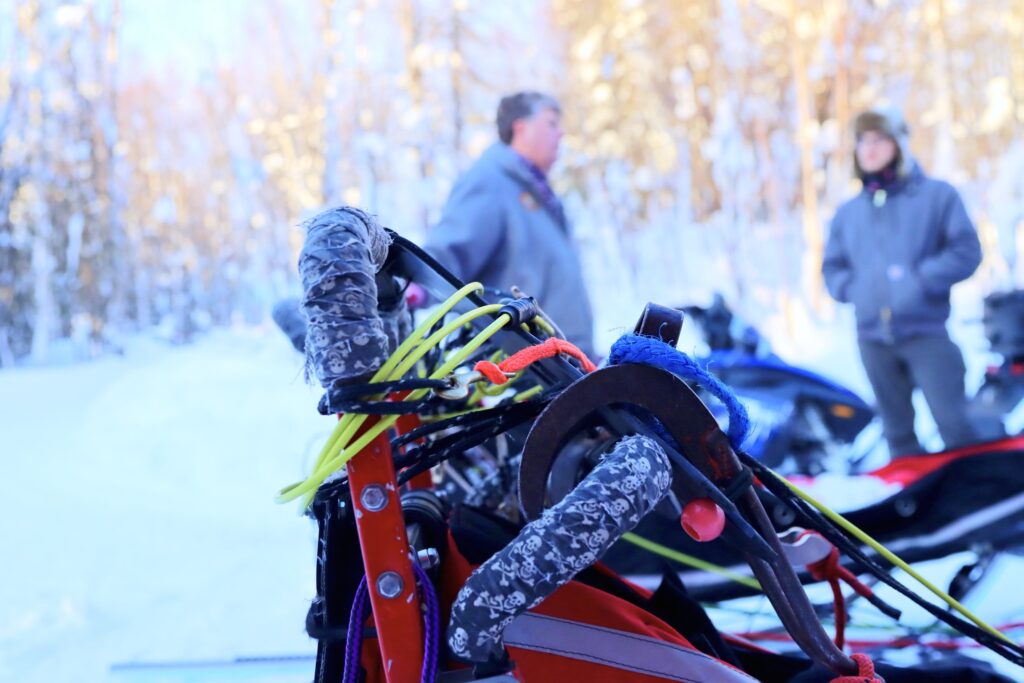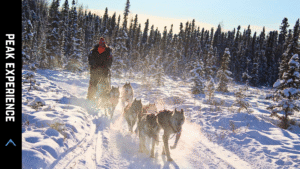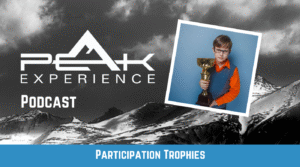When most people picture a sled dog team racing across the Alaskan wilderness, they see power, speed, and determination. But what’s less obvious is the careful orchestration behind that performance. Every dog on the team has a specific role, from the confident lead dogs guiding the way to the steadfast wheel dogs stabilizing the sled.
In the world of business, the same principle applies. High-performing teams aren’t just groups of talented individuals, they are carefully aligned collections of people whose unique skills complement one another. The more you understand and honor those different roles, the stronger your team cohesion becomes.
In this article, we’ll explore the four primary sled dog positions, lead, swing, team, and wheel, and show how each maps perfectly to the essential roles in the workplace. By the end, you’ll have a practical framework for building a business team that not only works hard, but works together toward a shared goal.
At the bottom of the article you will see our one-of-a-kind team-building program that is enrolling now
The Sled Dog Team as a Blueprint for Business Success
In dog mushing, teamwork isn’t optional, it’s survival. On the trail, conditions can change in seconds. Success depends on every dog pulling in harmony, each fulfilling its role to keep the sled moving forward.
Your business may not be crossing frozen rivers or navigating blizzards, but it faces its own challenges: shifting markets, tight deadlines, competitive pressures, and evolving customer expectations. Like a sled dog team, your organization needs clear direction, complementary skills, and seamless collaboration to thrive.
The Lead Dogs: Vision and Direction
In mushing:
Lead dogs are the front-runners. They set the pace, respond to the musher’s commands, and make real-time decisions about the best path forward. They need intelligence, focus, and the confidence to lead the team into unknown terrain.
In business:
Lead dogs represent your visionary leaders, the ones who chart the course, set the tone, and inspire the team to follow. These could be CEOs, project managers, or department heads, but the common thread is their ability to see what’s ahead and rally people toward it.
Key characteristics of your business “lead dogs”:
Strong communication skills
Strategic thinking
Confidence under pressure
Ability to inspire trust
Lessons for the workplace:
Empower your leaders to lead. Give them room to make decisions without constant second-guessing.
Choose leaders based on capability, not just seniority. Like sled dogs, leadership potential can be found in surprising places.
Support them with information and resources. Even the best lead dog needs a musher guiding from behind.
The Swing Dogs: Navigators and Connectors
In mushing:
Swing dogs run directly behind the lead dogs. Their primary job is to help navigate turns and keep the line straight. They are agile, adaptable, and responsive to changes in direction.
In business:
Swing dogs are your navigators and connectors, team members who bridge the gap between leadership vision and team execution. They translate big-picture goals into actionable steps, making sure the team stays aligned and on track.
Key characteristics of your business “swing dogs”:
Adaptability
Strong interpersonal skills
Translating strategy into action
Attention to alignment and detail
Lessons for the workplace:
Recognize the value of middle management and team leads. They often serve as the swing dogs in your organization.
Encourage adaptability. In dynamic environments, swing dogs keep everyone on course when priorities shift.
Make them communication champions. They help ensure the leader’s message is understood and acted upon.
The Team Dogs: Power and Consistency
In mushing:
Team dogs run in the middle of the pack. They provide the raw pulling power that keeps the sled moving mile after mile. They may not be as visible as the lead dogs, but without them, the sled goes nowhere.
In business:
Team dogs are your steady performers, the employees who consistently deliver results, keep projects moving, and provide the bulk of your organization’s output. They may not crave the spotlight, but they are the backbone of your operation.
Key characteristics of your business “team dogs”:
Reliability
Strong work ethic
Consistency over the long term
Willingness to work collaboratively
Lessons for the workplace:
Value and recognize steady performance. Not every contribution needs to be flashy to be essential.
Provide clear expectations and resources. Team dogs thrive when they know exactly what’s expected and have the tools to succeed.
Invest in their growth. Even your most consistent performers need development opportunities to stay engaged.
The Wheel Dogs: Stability and Strength
In mushing:
Wheel dogs run closest to the sled. Their job is to steady and guide the sled, especially around turns or through tricky terrain. They need to be calm, strong, and able to handle the physical demands of pulling the sled out of deep snow or across uneven ground.
In business:
Wheel dogs are your stabilizers, the dependable team members who keep things grounded during change, challenge, or crisis. They may be seasoned employees, operations specialists, or quiet problem-solvers who ensure stability when the pressure is on.
Key characteristics of your business “wheel dogs”:
Calm under pressure
Dependability
Institutional knowledge
Steadfast commitment to the team’s success
Lessons for the workplace:
Acknowledge the quiet strength they provide. Wheel dogs may not seek recognition, but their stability is a major asset.
Lean on them in times of change. They help keep morale steady and prevent chaos when things get bumpy.
Pair them with less experienced team members. Their calm presence can mentor and steady newer employees.
Building a Team That Pulls Together
In mushing, the sled only moves forward when all dogs are working in harmony. If one role fails, the team suffers, a strong leader can’t compensate for a missing stabilizer, and all the power in the world won’t help without clear direction.
The same is true in business. Cohesion comes from understanding, respecting, and leveraging each role. Here’s how to apply the sled dog model to your organization:
1. Identify Each Person’s Natural Role
Observe your team and determine who naturally takes on leadership (lead dog), who connects strategy to execution (swing dog), who delivers steady output (team dog), and who provides stability (wheel dog).
2. Communicate the Value of Every Role
Make it clear that no role is “more important” than another. Just as sled dogs can’t all be in the lead, not everyone needs to lead to be invaluable.
3. Align Roles With Strengths
Place people where their skills and temperament match the demands of the position. Misalignment can cause inefficiency and frustration.
4. Train for Flexibility
In mushing, dogs sometimes shift roles when needed. Cross-train employees so they can step into different roles during transitions or challenges.
5. Celebrate Collective Success
Focus recognition on the team’s combined achievements, not just individual stars. This reinforces the importance of pulling together.
Why This Model Works
The sled dog framework resonates because it’s simple, visual, and grounded in real-world success. It emphasizes:
Clarity of role — everyone knows their job and why it matters.
Mutual dependence — success depends on each position pulling its weight.
Adaptability — roles can shift to meet the needs of the trail ahead.
When applied in the workplace, it transforms teams from loosely connected individuals into a cohesive unit with a shared purpose.
Leading Your Own “Sled” in the Workplace
Whether you’re an executive guiding company strategy, a project leader managing cross-functional teams, or a small business owner steering growth, the sled dog model can help you clarify roles, strengthen trust, and boost performance.
Ask yourself:
Who are my lead dogs, and are they truly empowered to lead?
Who are my swing dogs, and do they have the tools to keep us on course?
Are my team dogs recognized for their steady contributions?
Do my wheel dogs have the support to keep us stable during change?
By answering these questions honestly, you can start aligning your people for maximum impact.
A sled dog team isn’t built overnight. It takes time, observation, and intentional placement to ensure that each dog is in the role where they can excel, and that they work together in harmony. The payoff is a team that can cover incredible distances, overcome obstacles, and arrive at the destination stronger than when they started.
Your business is no different. By recognizing and honoring the distinct roles within your team, lead, swing, team, and wheel, you can create an organization that not only moves forward but pulls together with strength, trust, and purpose.
Call to Action:
If you’d like to experience the sled dog leadership model firsthand, join us for a weekend experiential leadership retreat in Alaska. You’ll work directly with a real sled dog team, discover your natural role, and learn how to create a business team that pulls together through any terrain.
📅 Winter 2026 dates are limited.
👉 Visit The Adventure Strategist to reserve your team’s spot today.
Program Description:
Unleashing Excellence: Leadership and Team Building Lessons from the Sport of Dog Mushing

Imagine your team stepping away from the the every day grind and onto the snowy trails of Alaska, where leadership, trust, and teamwork aren’t just concepts… they’re team -building skills.
In this immersive weekend leadership retreat, your team will partner with a working sled dog team to learn how to:
Lead with vision and clarity in challenging conditions
Make confident decisions under pressure
Recognize and leverage the strengths of every team member
Build unshakable trust that lasts long after the snow melts
Guided by Dr. Robert Forto, an experienced musher, leadership coach, and founder of The Adventure Strategist, this isn’t a classroom seminar, it’s a hands-on, heart-pounding, laugh-together, problem-solve-together, “we’ll never forget this” kind of experience.
By the end of the weekend, your team will return to work more cohesive, more confident, and more committed to pulling in the same direction, no matter what the trail ahead brings.
Call to Action
Spots for Winter 2026 are extremely limited, just like the best sled dog teams, we keep our groups small for maximum impact.
- If your Alaska-based small business has a team of 8–10 and you’re ready to:
Strengthen trust - Improve communication
- Inspire next-level leadership
…then this is your moment.
📅 Reserve your team’s weekend now — and discover what your business can achieve when everyone’s pulling together.




